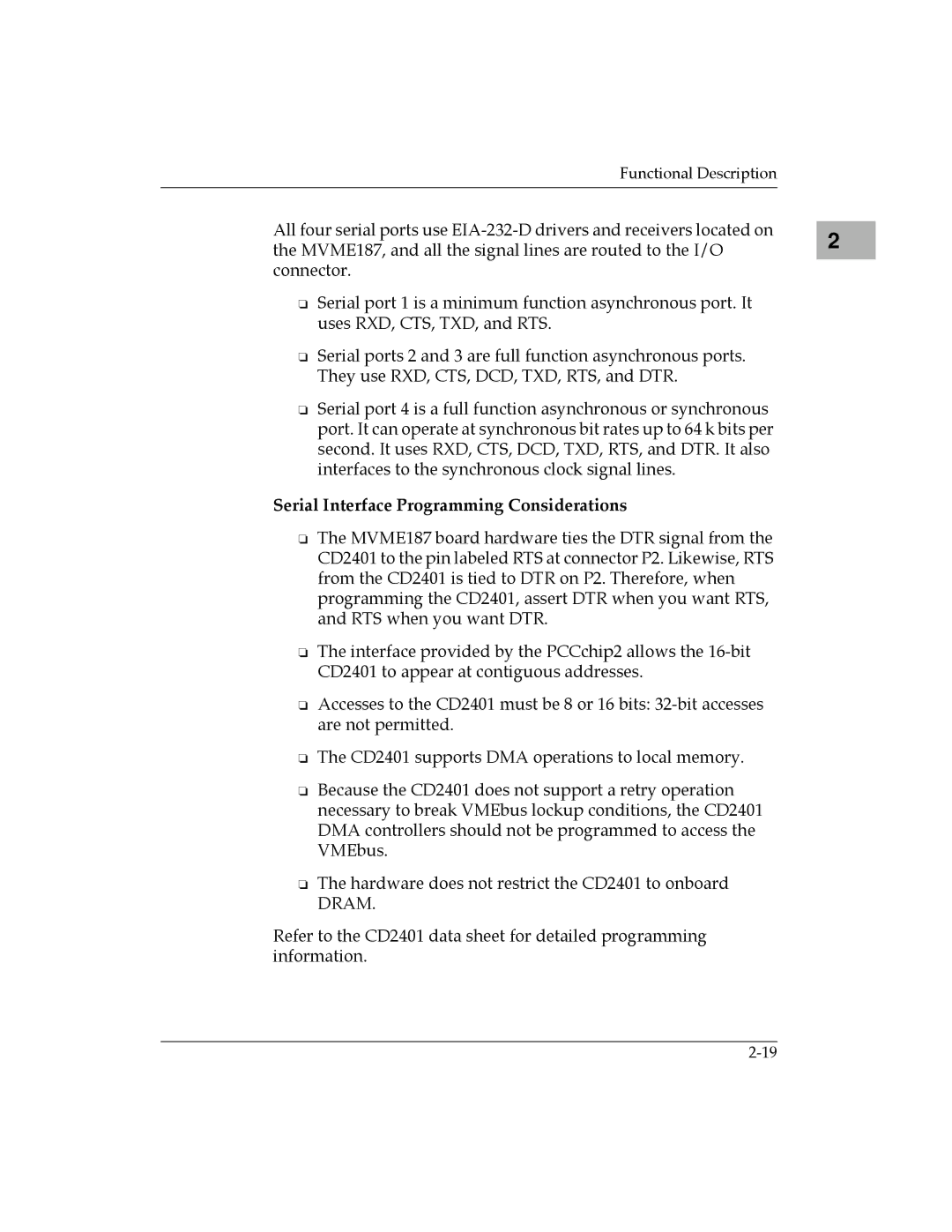
Functional Description
All four serial ports use
❏Serial port 1 is a minimum function asynchronous port. It uses RXD, CTS, TXD, and RTS.
❏Serial ports 2 and 3 are full function asynchronous ports. They use RXD, CTS, DCD, TXD, RTS, and DTR.
❏Serial port 4 is a full function asynchronous or synchronous port. It can operate at synchronous bit rates up to 64 k bits per second. It uses RXD, CTS, DCD, TXD, RTS, and DTR. It also interfaces to the synchronous clock signal lines.
Serial Interface Programming Considerations
❏The MVME187 board hardware ties the DTR signal from the CD2401 to the pin labeled RTS at connector P2. Likewise, RTS from the CD2401 is tied to DTR on P2. Therefore, when programming the CD2401, assert DTR when you want RTS, and RTS when you want DTR.
❏The interface provided by the PCCchip2 allows the
❏Accesses to the CD2401 must be 8 or 16 bits:
❏The CD2401 supports DMA operations to local memory.
❏Because the CD2401 does not support a retry operation necessary to break VMEbus lockup conditions, the CD2401 DMA controllers should not be programmed to access the VMEbus.
❏The hardware does not restrict the CD2401 to onboard DRAM.
Refer to the CD2401 data sheet for detailed programming information.
2
